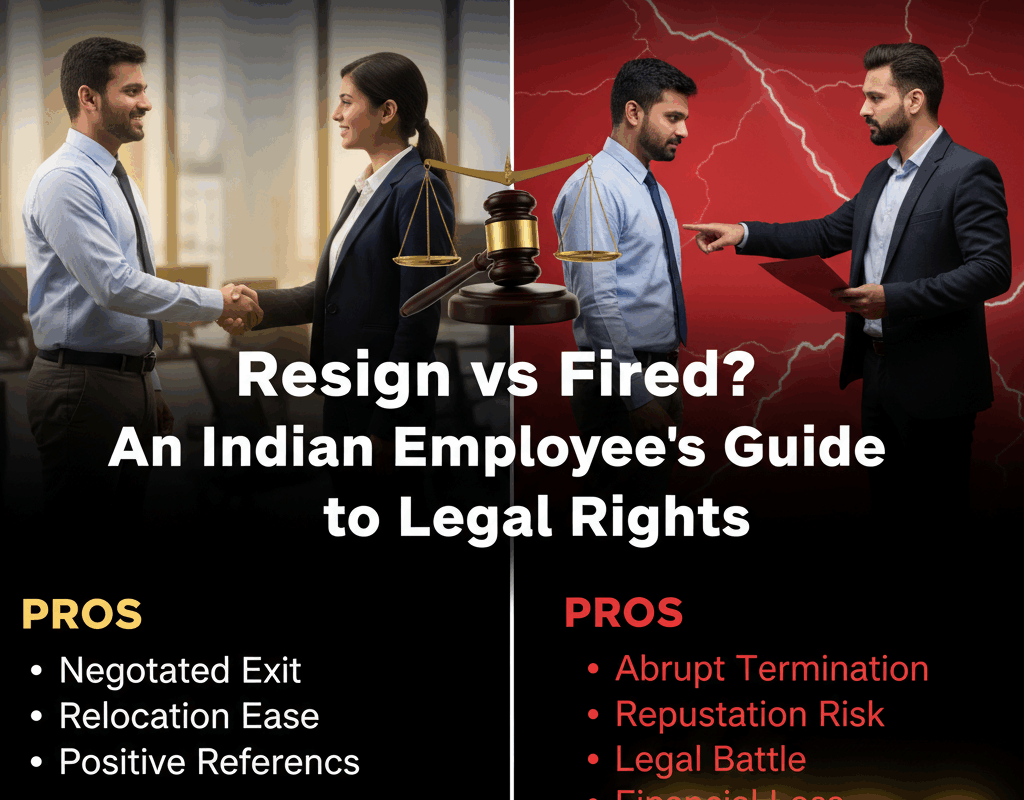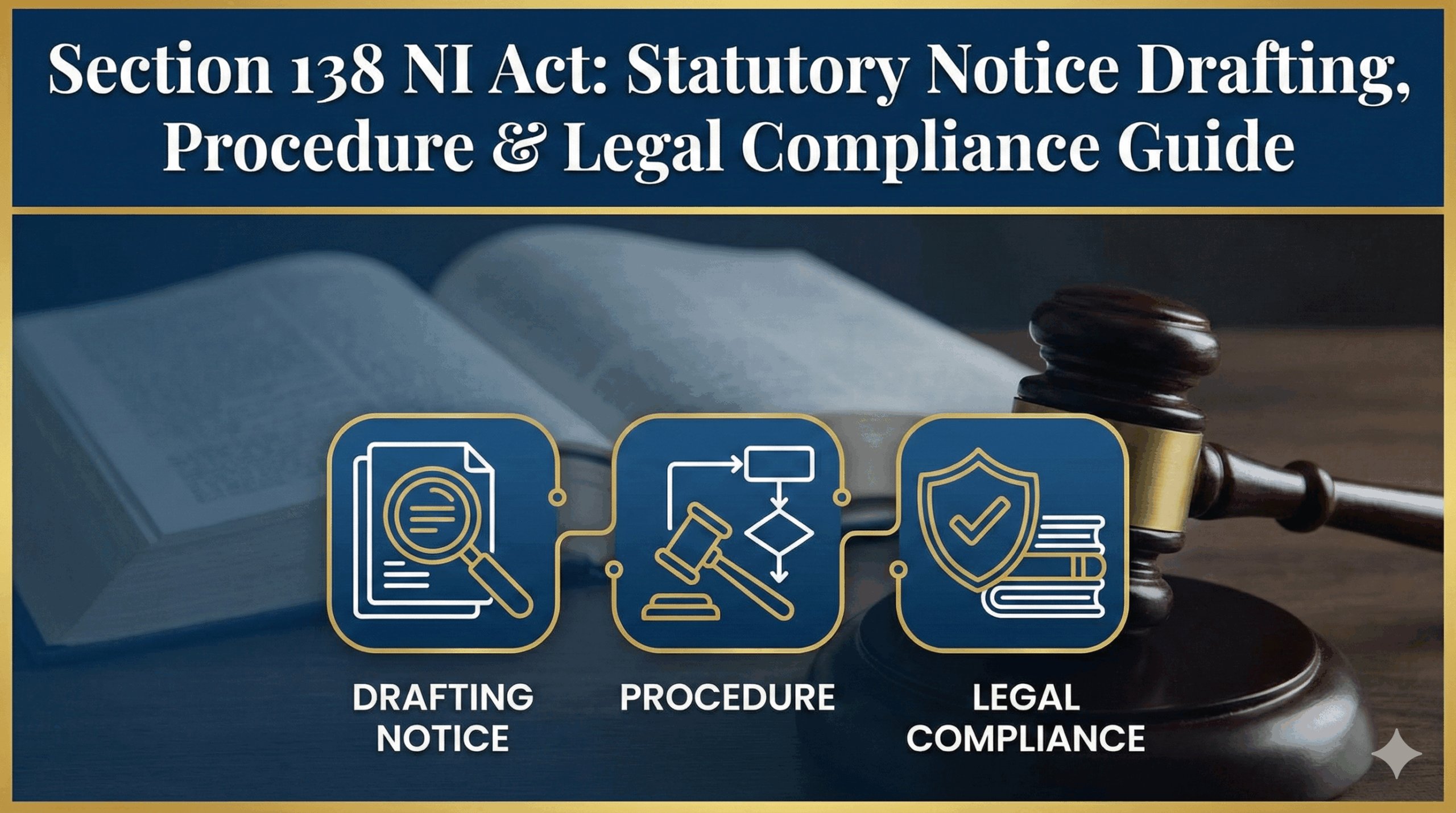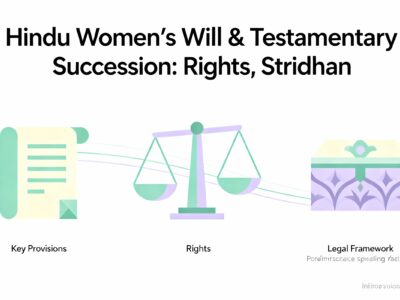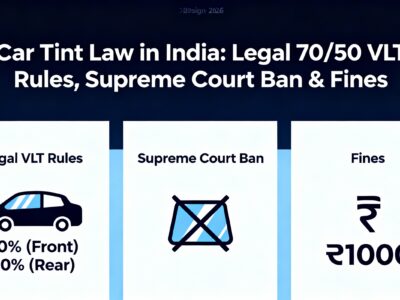Facing pressure to resign from your job in India is a daunting and legally complex situation. The decision to voluntarily resign versus refusing and facing a potential termination has profound consequences for your finances, career narrative, and future employment prospects. This comprehensive 2025 guide is designed to empower you with the legal clarity needed to make the right choice. We will break down the critical distinction between a ‘workman’ and a ‘non-workman’ under Indian employment law, analyze the strategic pros and cons of each path, help you calculate your financial entitlements, and provide actionable tools—including a legal notice template—to safeguard your rights.
Resigned vs Refused to Resign
A comprehensive legal and strategic guide for employees in India navigating the difficult decision of employment separation.
The Legal Landscape of Employment Separation
The termination of an employment relationship in India is a complex domain regulated by a multifaceted legal framework. An employee's rights and an employer's obligations are contingent upon a variety of factors, but the most critical initial determination is their legal classification: whether they qualify as a "workman" under the Industrial Disputes Act, 1947, or fall into the "non-workman" category. This single distinction fundamentally alters the applicable laws and potential remedies.
Key Legislations in Indian Employment Law
Industrial Disputes Act, 1947
Pivotal for 'workmen', governing disputes, retrenchment, and fair treatment.
State Shops & Establishments Acts
Primary law for 'non-workmen' in commercial establishments, regulating notice periods and working hours.
Payment of Gratuity Act, 1972
Mandates gratuity payment after 5+ years of service.
Indian Contract Act, 1872
The foundation for all employment agreements, defining rights and obligations.
Defining Your Status: Are You a 'Workman'?
This is the single most important question in Indian employment law. The Industrial Disputes Act, 1947, defines a 'workman' as any person employed to do manual, unskilled, skilled, technical, operational, clerical, or supervisory work. However, it explicitly excludes those in primarily managerial or administrative roles.
The determination is not based on your job title, but on the primary nature of your duties. A 'Team Lead' who primarily codes is likely a workman, while one who primarily manages people and budgets is not.
Workman vs. Non-Workman: A Critical Divide
Workman
(Protected under Industrial Disputes Act)
- Primary Duties:Skilled/unskilled, technical, manual, clerical.
- Termination:Requires strict "retrenchment" process, valid reason.
- Key Protection:Protected against unfair dismissal, entitled to severance.
- Legal Forum:Labour Court / Industrial Tribunal.
Non-Workman
(Governed by Contract & Shops Act)
- Primary Duties:Managerial, administrative, supervisory.
- Termination:Governed by employment contract (notice period).
- Key Protection:Limited to contract terms; no statutory severance.
- Legal Forum:Civil Court.
The Power of Your Employment Contract
Regardless of your status, your employment contract is the foundational document of your professional relationship. It outlines the specific terms agreed upon by you and your employer. When facing a potential exit, you must review it carefully.
Key Clauses to Review
Notice Period
Defines the required duration of notice from either side for termination/resignation.
Termination Clause
Outlines the specific conditions under which the employer can terminate your employment.
Payment in Lieu of Notice (PILON)
Specifies if the employer or employee can pay salary instead of serving the notice period.
Garden Leave
A clause where you are paid during your notice period but are asked not to work.
The Grey Area of "Forced Resignation"
A significant grey area exists where a resignation is submitted not out of free will, but due to coercion or an untenable work environment. This is known as "forced resignation" or "constructive dismissal."
What is Constructive Dismissal?
Direct Threats
Hostile Environment
Unjust Changes
Withholding Docs
Employee feels no choice but to resign
Legally treated as
Wrongful Termination
The Supreme Court's ruling in *X v. Registrar, MP High Court* (2022) significantly strengthened this concept, holding that a resignation under compelling circumstances is not voluntary and amounts to a 'constructive dismissal'.
Two Paths, One Decision: A Strategic Breakdown
Choosing to resign or refusing to do so is a critical strategic decision. Each path has distinct advantages and disadvantages that trade financial security against professional narrative.
The "Resign" Path
A voluntary exit that prioritizes a clean record and smoother career transition.
Pros:
- ✔ Control the Narrative: Frame your departure positively for future employers.
- ✔ Clean BGV Report: "Resignation" raises no red flags in background checks.
- ✔ Preserve Relationships: Avoids burning bridges and maintains professional networks.
Cons:
- ✖ Forfeit Retrenchment Pay: Lose statutory severance (15 days' pay per year of service).
- ✖ Ineligible for Benefits: May lose out on unemployment benefits under ESI.
The "Refuse to Resign" Path
A legal maneuver that forces the employer to follow due process, protecting financial rights.
Pros:
- ✔ Secure Retrenchment Pay: Entitlement to full statutory severance compensation.
- ✔ Right to Due Process: Employer must follow strict legal procedures for termination.
- ✔ Negotiation Leverage: Potential for an enhanced severance package to avoid litigation.
Cons:
- ✖ Termination on Record: A potential red flag on future BGV reports.
- ✖ Risk of "For Cause" Dismissal: Employer might try to build a case for misconduct.
- ✖ Emotional & Financial Toll: The process can be stressful and costly.
Financial and Professional Ramifications
The choice has significant financial consequences and a long-term impact on your career trajectory. Here's a head-to-head comparison.
Interactive Financial Impact Calculator
For 'Workmen' under the IDA. Adjust the sliders to see the potential financial difference.
Financial Entitlements Comparison Table
| Financial Component | Resignation | Termination (Retrenchment) | Termination (Misconduct) |
|---|---|---|---|
| Notice Pay | Serve or buy out | Paid by Employer (PILON) | Generally Not Applicable |
| Retrenchment Comp. | Not Applicable | Mandatory | Not Applicable |
| Gratuity (>5 yrs) | Payable | Payable | Can be forfeited |
| Leave Encashment | Payable | Payable | Payable |
| Provident Fund (PF) | Full Balance Available | Full Balance Available | Full Balance Available |
The Art of Negotiation: The Exit Interview & Severance
Whether you resign or are terminated, there is often a window for negotiation. Your leverage depends on your classification, the reason for exit, and your documentation. The goal is to secure a "managed exit" that is financially and professionally amicable.
Key Negotiation Strategies
1. Know Your Leverage
Are you a 'workman' being laid off? Your leverage is high (statutory payments). Are you a 'non-workman' with evidence of harassment? Leverage is high (potential lawsuit). Poor performance? Leverage is lower.
2. Document Everything
Maintain a written record of all conversations. After a verbal discussion, send a polite follow-up email summarizing what was discussed. This creates a paper trail.
3. Remain Professional & Calm
Emotional outbursts reduce your credibility. State your case based on facts, company policy, and legal rights. A calm demeanor is more persuasive.
4. Negotiate Beyond Money
Think holistically. You can negotiate for: a positive relieving letter, a waiver of your notice period, a commitment for a neutral reference, or outplacement services.
An employer's primary motivation to negotiate is often to avoid the time, cost, and reputational risk of litigation. A well-reasoned legal notice from your advocate can significantly strengthen your negotiating position.
Scenario-Based Decision Making
The optimal course of action depends entirely on your specific situation. Here's a breakdown of common scenarios.
Scenario 1: Faced with Allegations of Misconduct
This is a precarious situation. An employer can legally refuse your resignation if an inquiry is pending.
If Allegations are Baseless:
Refuse to resign. Insist on a formal domestic inquiry to clear your name. Resigning can be seen as an admission of guilt.
If Allegations have Merit:
Seek legal counsel immediately. The goal shifts to negotiating a managed exit to mitigate reputational damage.
Scenario 2: Faced with a Poor Performance Review / PIP
A Performance Improvement Plan (PIP) is often a precursor to termination. Your legal classification is critical here.
For 'Non-Workmen':
Resigning is often prudent. It allows you to control the narrative and maintain a clean BGV record, with no financial upside to being terminated.
For 'Workmen':
Refusing to resign is financially viable. A termination for performance would be a retrenchment, entitling you to statutory compensation.
Scenario 3: Faced with Company Restructuring or Layoffs
This is a "no-fault" termination. Employers might encourage voluntary resignations to avoid liability.
Optimal Strategy: Refuse to Resign
In almost all cases, this is the best decision. You secure your legal right to full retrenchment compensation (for 'workmen') or gain significant leverage to negotiate a favorable severance package (for 'non-workmen'). The reason for termination ("redundancy") does not negatively impact future BGV checks.
Frequently Asked Questions (FAQs)
Can my employer refuse to accept my resignation?
Generally, no. A resignation is a unilateral act and takes effect once communicated. However, an employer can legally defer its acceptance if a disciplinary inquiry is pending or if your contract has a specific clause allowing them to do so. They cannot, however, indefinitely refuse it.
What if I resign via email? Is it valid?
Yes. Under the Information Technology Act, 2000, electronic communication is a valid form of notice. As long as the email is sent to the appropriate authority (your manager, HR) and is clear in its intent, it is a legally valid resignation.
Do I have to serve the full notice period?
This depends on your contract. If it includes a "buy-out" or PILON clause, you can pay the equivalent salary to be relieved early. If not, the employer can insist you serve the full period. However, this is often negotiable, and employers frequently agree to an early release, especially if a smooth handover is completed.
What is a "Full and Final Settlement (FnF)"?
The FnF is the last payment made by an employer after your employment ends. It typically includes your last month's salary, any unused leave encashment, gratuity (if applicable), and any other dues. An employer is legally obligated to complete this settlement within a specified period (often 45-60 days) after your last working day.
Legal Recourse for Wrongful Termination
If an employer terminates you unlawfully, you have the right to seek legal recourse. The path to justice depends on your classification.
The Path to Justice: A Step-by-Step Flowchart
Documentation
Preserve all contracts, emails & records.
Legal Notice
Lawyer sends notice to employer, opening door for settlement.
File a Dispute
'Workmen' → Labour Court
'Non-Workmen' → Civil Suit
Potential Remedies
The remedies available differ significantly based on the legal forum and your employee classification.
Reinstatement
A powerful remedy for 'workmen' where a court can order the employer to give you your job back.
Back Wages
Often awarded with reinstatement, this is payment for the period you were unlawfully unemployed.
Compensation
The primary remedy for 'non-workmen', covering lost wages and damages for harassment.
Legal Notice Template for Wrongful Termination
A legal notice is the first formal step in resolving a dispute. It communicates your grievances and demands to the employer, showing you are serious about pursuing legal action. Below is a basic template. It is strongly advised to have this drafted and sent by a qualified advocate.
DRAFT LEGAL NOTICE
[Your Advocate's Letterhead]
Date: [Date]
To,
The Managing Director/CEO,
[Employer's Company Name]
[Company's Registered Address]
Subject: Legal Notice for wrongful termination of my client, [Your Name]
Sir/Madam,
Under instructions from and on behalf of my client, [Your Name], son/daughter of [Father's Name], residing at [Your Address], I do hereby serve you with the following legal notice:
1. That my client was appointed as a [Your Designation] in your organization vide an appointment letter dated [Date of Joining] and has since been working diligently and sincerely.
2. That on [Date of Termination], your company abruptly and illegally terminated my client's services without any prior notice, without assigning any valid reason, and in complete violation of the terms of the employment contract and the principles of natural justice.
3. [This is a crucial paragraph. Add specific details here. For example: "That my client was forced to resign under duress...", or "That the termination was disguised as a layoff but was, in fact, an act of reprisal for...", or "That the termination did not follow the due process for retrenchment as mandated under the Industrial Disputes Act, 1947."]
4. That the aforesaid actions of your company constitute a wrongful and illegal termination, which has caused my client immense mental agony, financial hardship, and reputational damage.
5. I, therefore, through this legal notice, call upon you to do the following within a period of 15 (fifteen) days from the receipt of this notice:
a) Pay my client a sum of ₹[Amount]/- as compensation for the wrongful termination, mental harassment, and loss of future earnings.
b) Issue an unconditional apology and a service certificate detailing my client's positive contributions.
c) Settle all my client's pending dues, including salary, gratuity, and leave encashment.
A copy of this notice is kept in my office for record and further necessary action. Should you fail to comply with the above demands, my client shall be constrained to initiate appropriate civil and/or criminal proceedings against you in a competent court of law, and in such an event, you shall be liable for all costs and consequences thereof.
Yours faithfully,
[Advocate's Name]
[Advocate's Signature & Seal]
Disclaimer: This is a sample template for informational purposes only and does not constitute legal advice. The facts and figures should be changed according to your specific situation. Always consult a lawyer before sending a legal notice.










